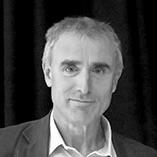What I found, in preparing for my ‘interview’ with Assemble by first compiling information on them and then using it to frame potential questions to ask them, is that my respondent provided such extensive and detailed answers that some of the questions became redundant, others became irrelevant. I feel obliged to put inverted commas around the word ‘interview’ as the event was more like a presentation, followed by a question-and-answer session. It meant that I had to adopt a highly flexible, loose-fit technique, in which some of the questions I would like to have asked were initially overlooked. It also meant that time ran out for all the pre-prepared questions to be posed (the room had been hired for only two hours). Fortunately, my planned method involved sending the respondent a transcript of the highly edited ‘interview’ and inviting him to edit it further with corrections, clarifications, suggested additional remarks, and requested omissions (in the interests of commercial confidentiality etc).
Above all, because this was a public event (organised by the Norfolk Contemporary Art Society – NCAS), with me acting as host and inviting questions from ‘the floor’, I had no control over what questions were asked – nor, in the interests of democracy and courtesy, did I seek such control (I could have ‘planted’ questions to be raised by particular individuals, but felt this would be unethical and inconsistent). As a result, some of the questions asked, and answers provided, have been omitted from the transcript (on the grounds that I immediately judged them irrelevant to my research question), while other questions and answers have been subsumed into the framework of my own ‘pre-prepared questions.’ In other words, the transcript does not purport to be a verbatim replica of what was said (as if such a feat were possible, or even necessary): it is intended merely to capture a selection of the information obtained by reference to a series of preconceived headings, presented not in the order in which the questions were asked, and not quoting actual words used (except where identified in inverted commas).
Because of the ‘in public’ nature of the interview, it was also impossible to record the planned contextual observations (suggested on the grounds that environment invariably influences what is said and how, and may therefore contribute to the interpretation of, or weight given to, ‘information’). Some circumstantial notes in the immediate aftermath may nevertheless be useful.
The respondent had no control over the shape of the auditorium, the lighting level, or where people sat. The space was semi-circular, with a projection screen in the centre and lectern with microphone and computer to one side, with a small table adjacent on which water was provided. I stood up to introduce our guest, he stood up to show and talk about a series of photographs of Assemble’s work, then I stood up again to round the session off and thank him for his presentation. Two chairs were located on either side of the screen for myself and the respondent to sit down while questions were being asked, and while a member of the NCAS committee thanked us both for bringing the event together. Our guest spoke confidently and articulately (having no doubt given similar talks many times before); he had a sheaf of paper sticking out of his jacket pocket, but was not observed to refer to it even once.
Afterwards, members of the audience confided to me that they felt this had been the best talk in this year’s NCAS programme – reflecting a combination of the clarity of the presentation, the inherent interest of the material and ideas presented, and the overall professionalism of the event’s delivery. Which was gratifying, of course.

